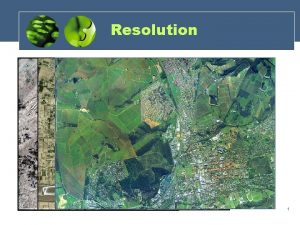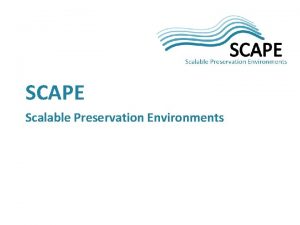Sylvester Pro Scape Landscape Garden Technologies Avid Gardener














- Slides: 14

Sylvester Pro. Scape Landscape & Garden Technologies

Avid Gardener… avid adj 1: (often followed by `for') ardently or excessively desirous; "avid for adventure"; "an avid ambition to succeed"; "fierce devouring affection"; 2: marked by active interest and enthusiasm; "an avid sports fan"; "a great walker"; "an eager beaver" [syn: great, eager, ]


Carolinian Species & Habitats Even though Carolinian Canada is quite small compared with other Canadian vegetation zones, making up only 1% of Canada's total land area, it boasts a greater number of both flora and fauna species than any other ecosystem in Canada. It is estimated that some 2, 200 species of herbaceous plants are found here, including 64 species of ferns, at least 110 species of grasses, and over 130 different sedge species. There are 70 species of trees alone.

• Mixedwood Plains: This ecozone surrounds the Great Lakes and the St. Lawrence River Valley. It is the most densely populated part of Canada and also the most intensely used area. Once heavily forested, very little of the original forest remains today. Centuries of agriculture, logging, and urbanization have fragmented the landscape into isolated pockets of forests. Originally, eastern white pine, eastern hemlock, yellow birch, red pine, sugar maple, red oak, basswood, and white elm were widely distributed. There was also a small portion of the deciduous or Carolinian forest in southwestern Ontario. Today, the remaining forests in this ecozone consist of 12. 8% mixedwood, 2. 1% deciduous, and 0. 2% coniferous trees.

Ontario's Carolinian zone is the province's most threatened ecological region. Over 124 species in Carolinian Canada are considered vulnerable, species of special concern, threatened or endangered by either the federal or provincial government. Over 400 species in Carolinian Canada are considered rare by the Natural Heritage Information Centre.



State of the World’s Forests Source: FAO; Natural Resources Defense Council; World Resources Institute. • Half of the forests that originally covered 46% of the Earth's land surface are gone. Only one-fifth of the Earth's original forests remain pristine and undisturbed. • In the 1990 s, the world’s forested area declined by about 2. 4% (90, 000 sq km) per year. • Tropical deforestation rates, the world’s highest, are estimated at over 130, 000 sq km per year. • The U. S. consumes 27% of the wood commercially harvested worldwide. • In North America, 56% of coastal temperate rainforests have been destroyed. • 430, 000 mi of roads cut through U. S. National Forests, primarily for logging purposes. • Global wood consumption is projected to double over the next 30 years.

What is a Tree… A tree can be defined as a large, perennial, woody plant. Though there is no set definition regarding minimum size, the term generally applies to plants at least 6 m (20 ft) high at maturity and, more importantly, having secondary branches supported on a single main stem or trunk


Planting trees and shrubs is one of the simplest ways for landowners to restore and protect natural areas in the Carolinian zone. The benefits are many and varied: • Provides of wildlife habitat • Enhances of aesthetic values • Provides energy conservation • Develops of future economic returns • Controls soil erosion by wind and water • Controls nutrient and pesticide movement in surface and groundwater • Enhances of crop yields • Protects of biodiversity • Improves of water quality and water flow rates.


Dwarf Sand Cherries Growing on almost pure sand along the edge of the lower Great Lakes, sand cherries were used by the pioneers for fresh fruit and preserves. Urban sprawl and shoreline development has reduced their range tp parks such as the Pinery, Long Point and Point Pelee where expanding deer herds have grazed them right onto the endangered species list. Sarnia is most fortunate. A healthy population of sand cherries exists in Canatara Park, partly due to the work of volunteers, as well as a local couple who have been planting them on their lake frontage in an effort to return them to their original habitat.
 Avid landscape
Avid landscape Avid xpress pro hd
Avid xpress pro hd Scape procure
Scape procure Skydrive email
Skydrive email Jim sylvester dfps
Jim sylvester dfps Joey sylvester
Joey sylvester Ro sylvester
Ro sylvester Conjectura goldbach
Conjectura goldbach Sylvester and the magic pebble character traits
Sylvester and the magic pebble character traits Che guevara john lennon photo
Che guevara john lennon photo Why add pronouns to email signature
Why add pronouns to email signature Sylvester stallone biografie
Sylvester stallone biografie Sylvester duncan
Sylvester duncan Macro pro
Macro pro Gardener parable
Gardener parable


























